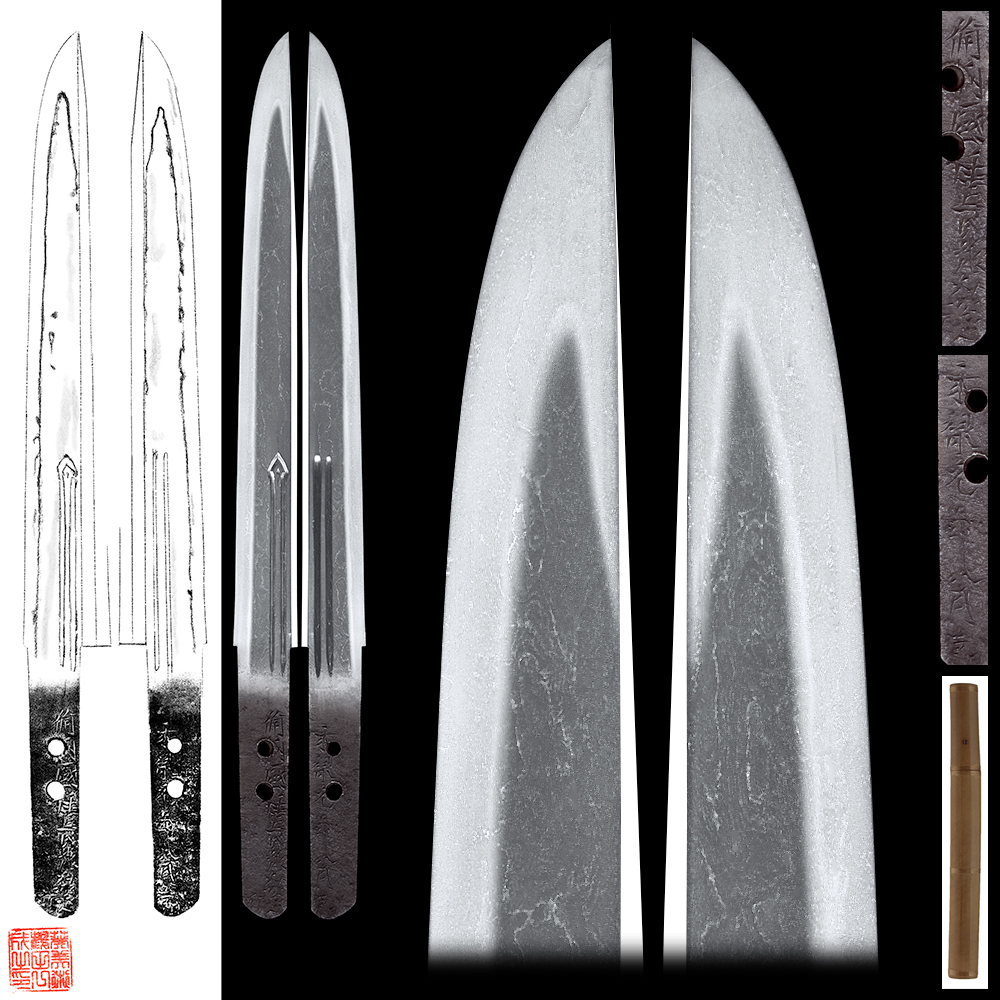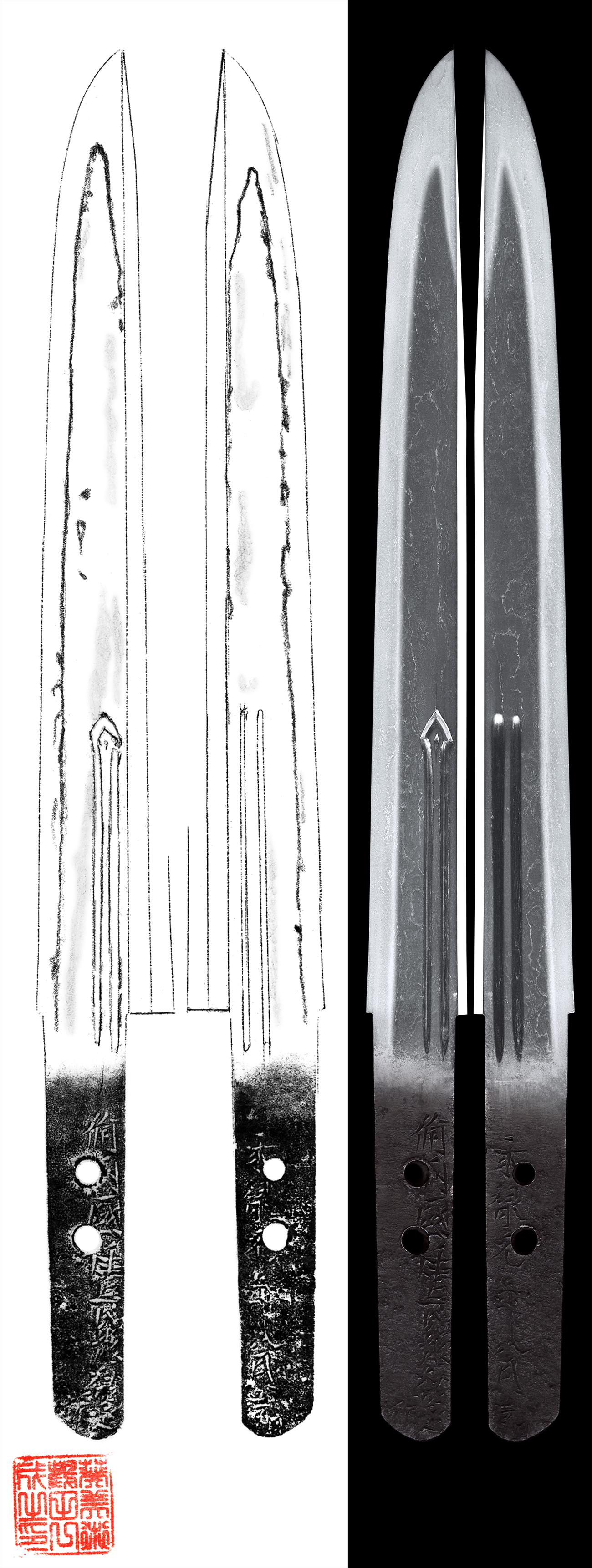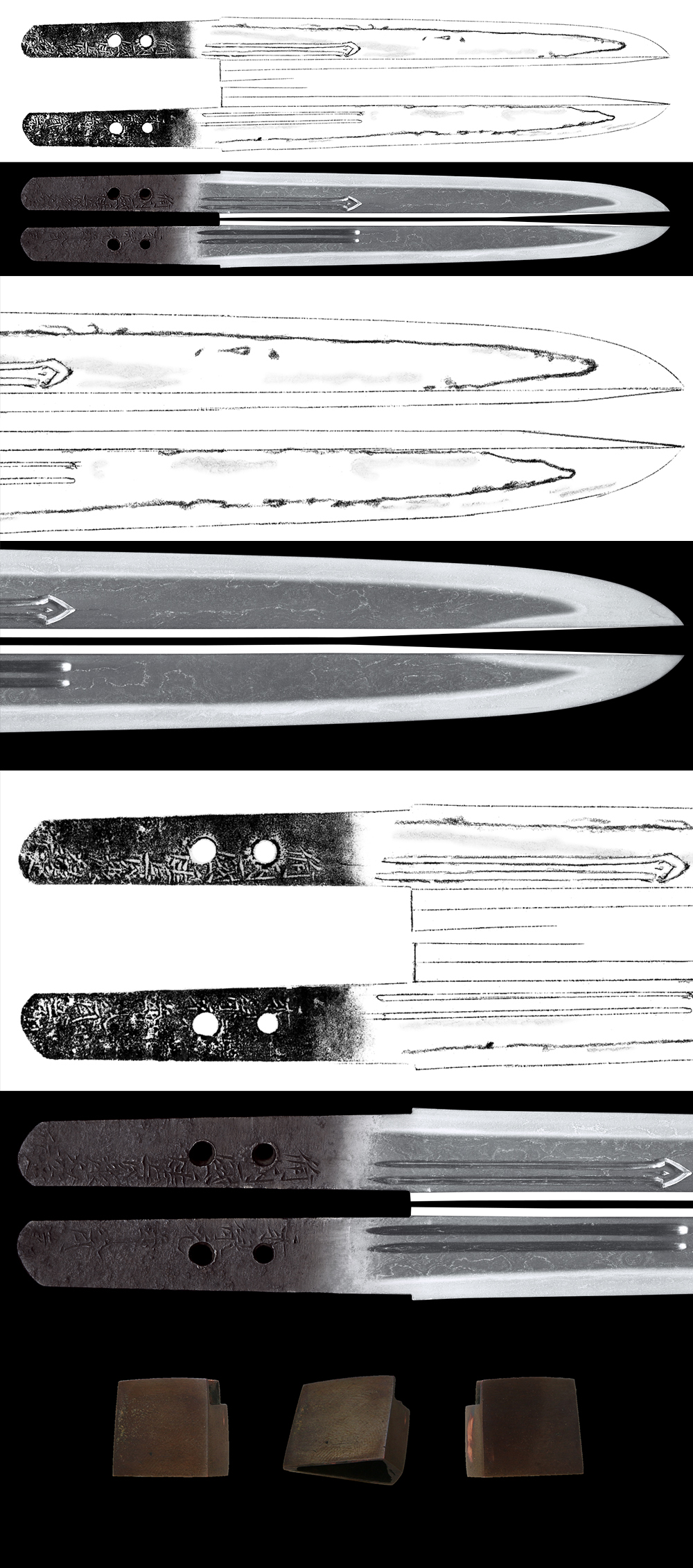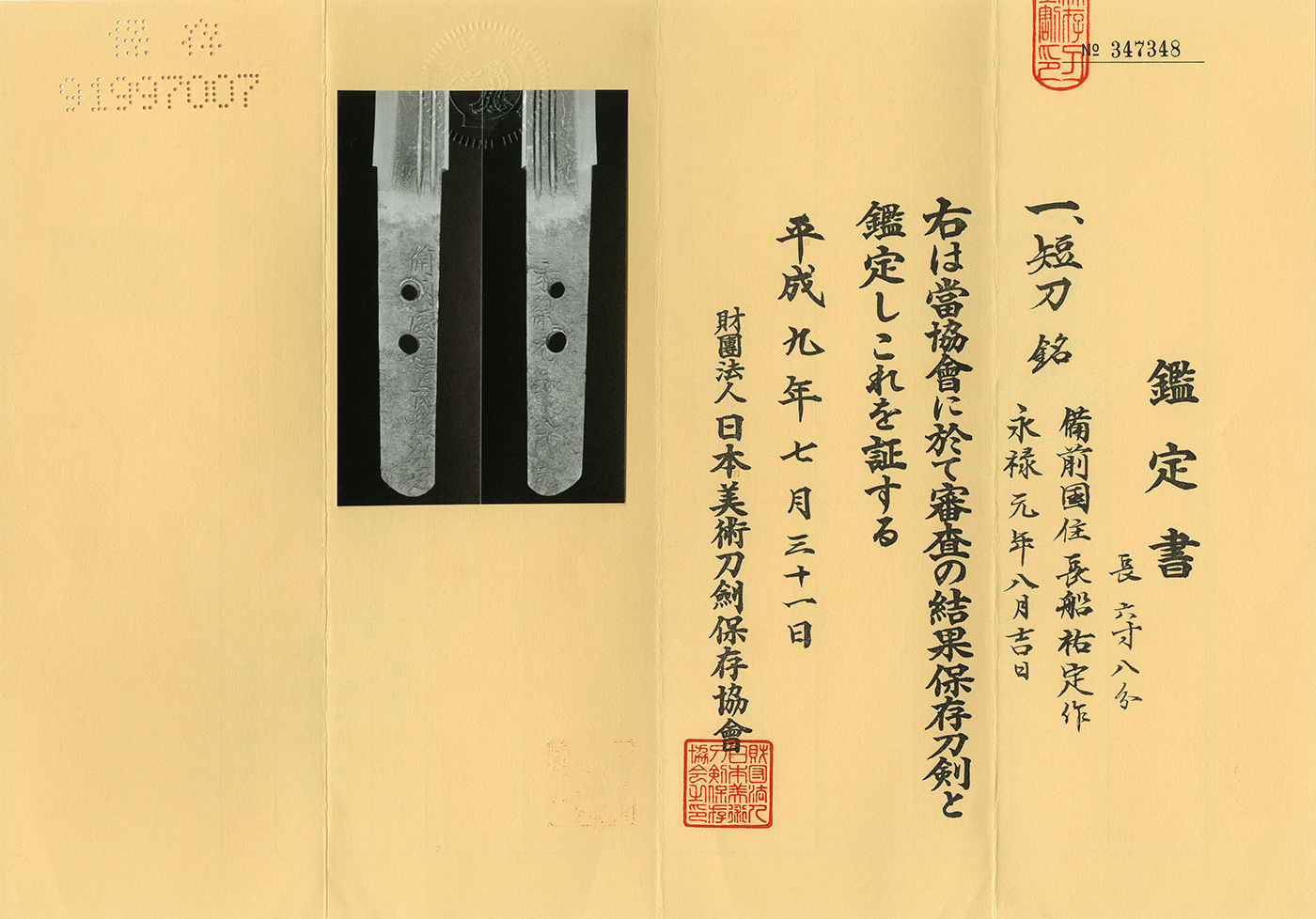Tanto: Bishu Ju Osafune Sukesada
2017/02/20
Tanto in Shirasaya : (NBTHK Hozon paper)
Signature : Bishu Ju Osafune Sukesada
Eiroku Gannen 8 Gatsu Kichijitu
(Good day of August, 1558)
(We divide 4 sections for each sword as Saijo saku, Jojo saku, Jo saku and regular saku)
This sword belongs to Jo saku ranking.
The blade is polished.
Habaki : Single Suaka Habaki.
Blade length : 20.1 cm or 7.91 inches.
Sori : 0 cm or 0 inches.
Mekugi : 2
Width at the Hamachi : 1.98 cm or 0.78 inches.
Kasane : 0.79 cm or 0.31 inches.
Era : Later Muromachi period Eiroku 1st (1558).
Shape : Sharp Tanto with thick blade such like Yoroidoshi. There are Gomabashi (Chopstick for ‘Homa’ ritual to purify the unclean spirit in buddhism) and Suken (The sword of Acala) engraved on each side of the blade.
Jigane : Mokume-hada well grained with Jinie attach, pale Utsuri appears on blade.
Hamon : Nioi-deki Suguha with Ashi working well. Boshi turns round shape.
Special feature : At Sengoku period, Japan was in age of civil war.
Weapons were demanded from all over Japan and large amounts of swords were made to supply at Bizen province. And not just in Japan but swords were exported to Ming dynasty in China. Above all, Bizen province has produced several great talented swordsmiths.
Sukesda school made many swords as mass products.
There are three ranks for Bizen swords, mass producted blades have signature begins with ‘Bishu’ and good ranking blades are having ‘Bizen’. And the top ranking blades are having secular names of each person forged the blade.
Historical back ground : Kinoshita Tokichiro (Toyotomi Hideyoshi) started to serve to Daimyo Oda Nobunaga at September of Eiroku 1st.
Aoi Art estimation paper : whole Oshigata.




